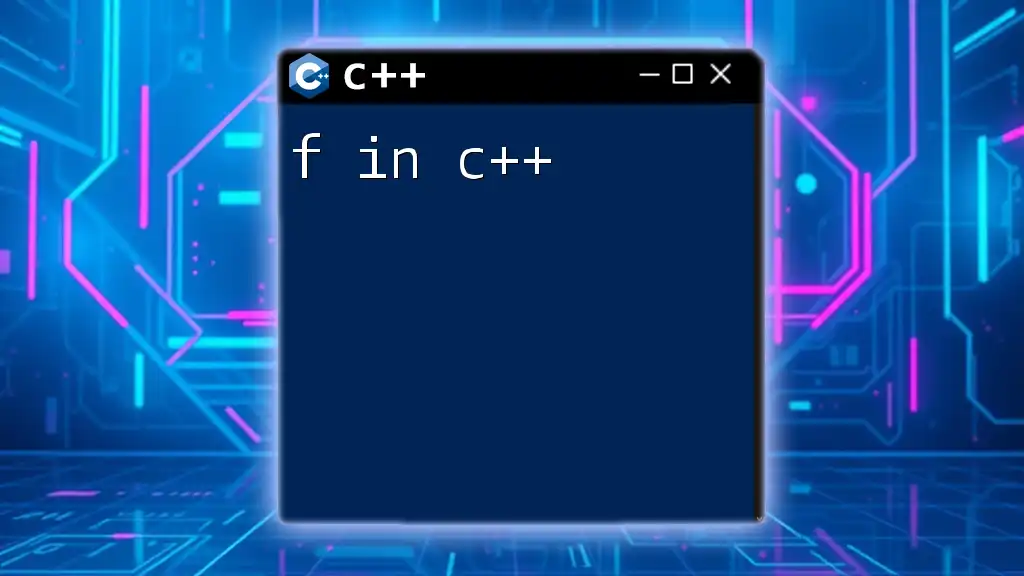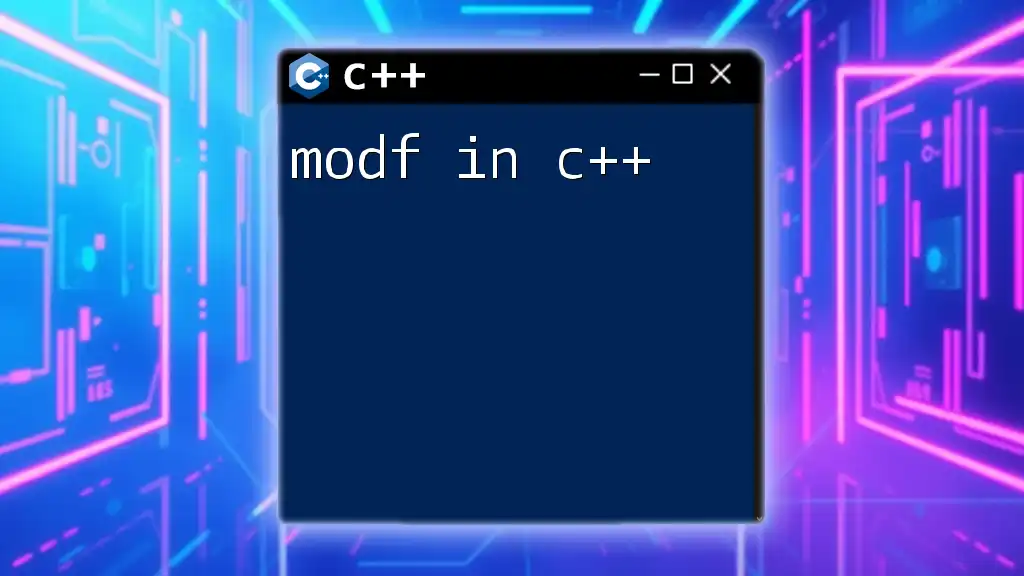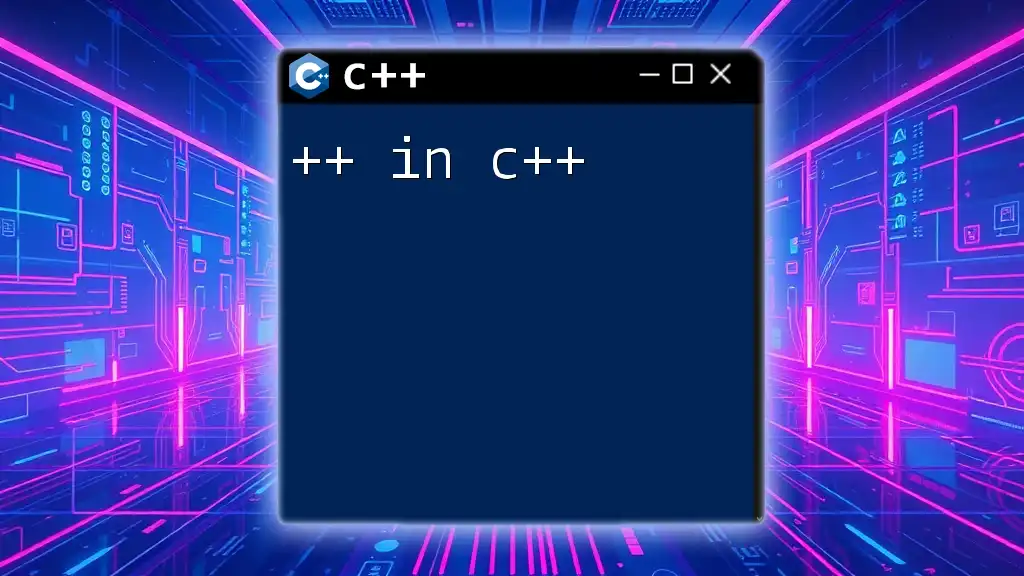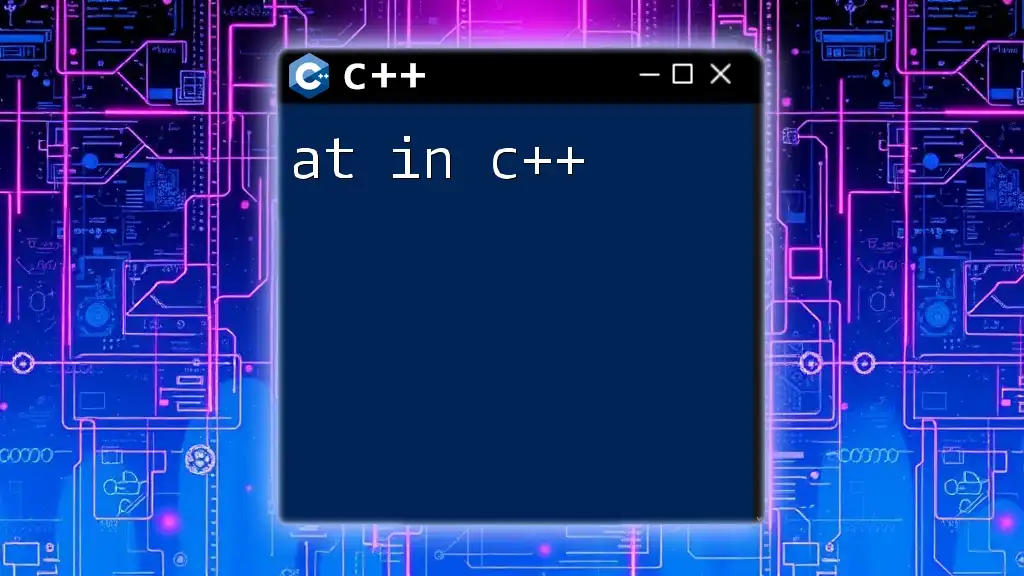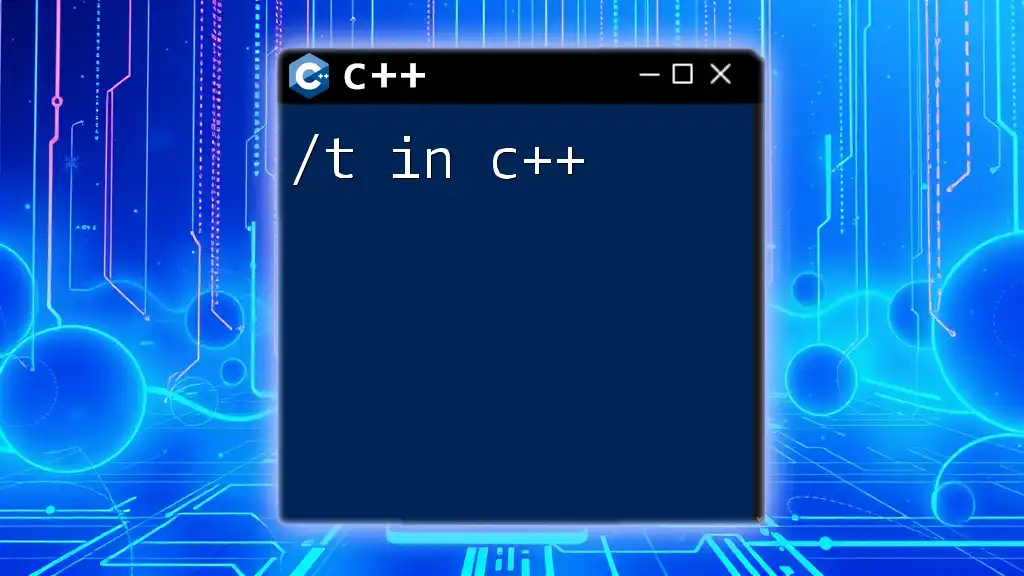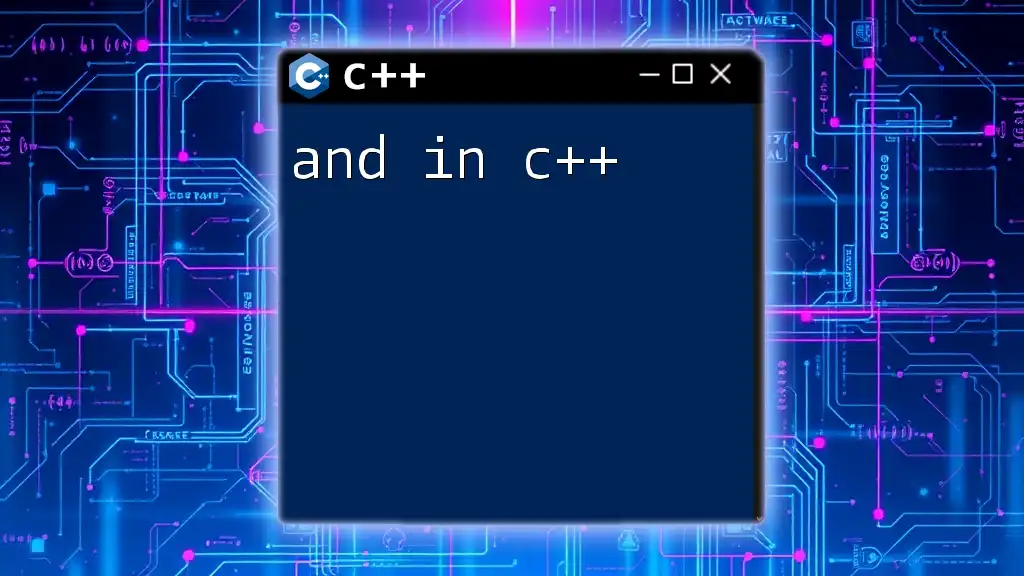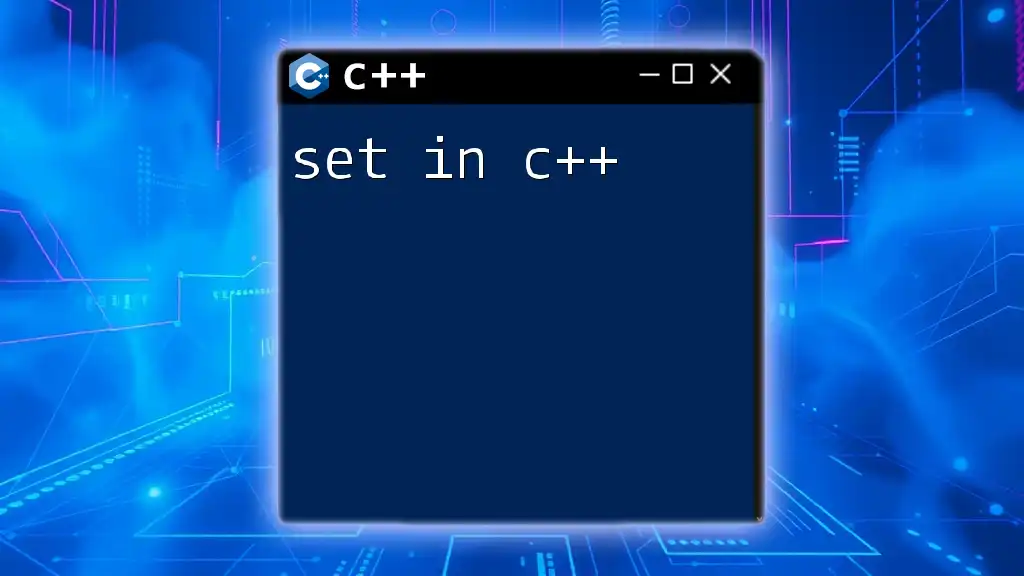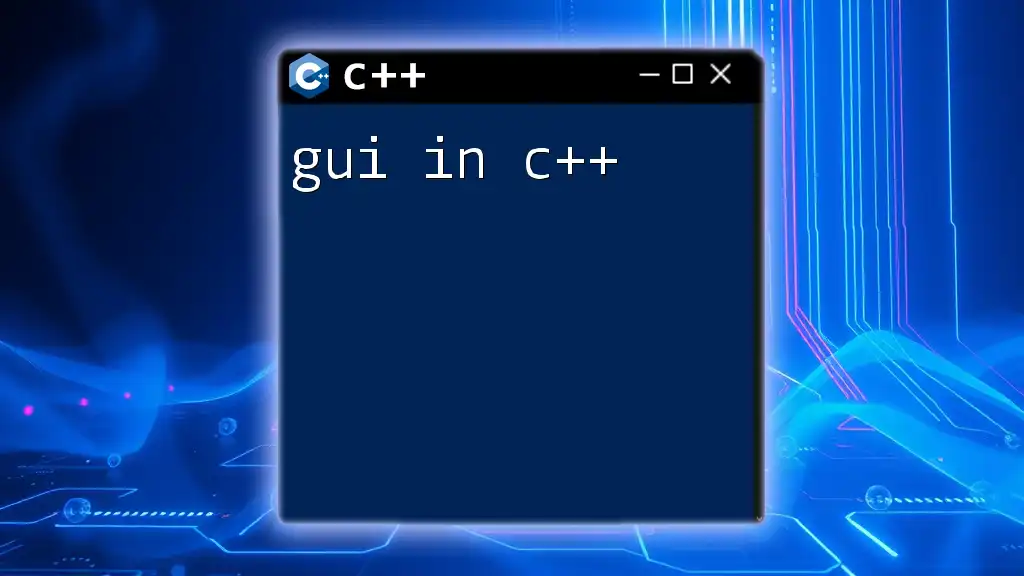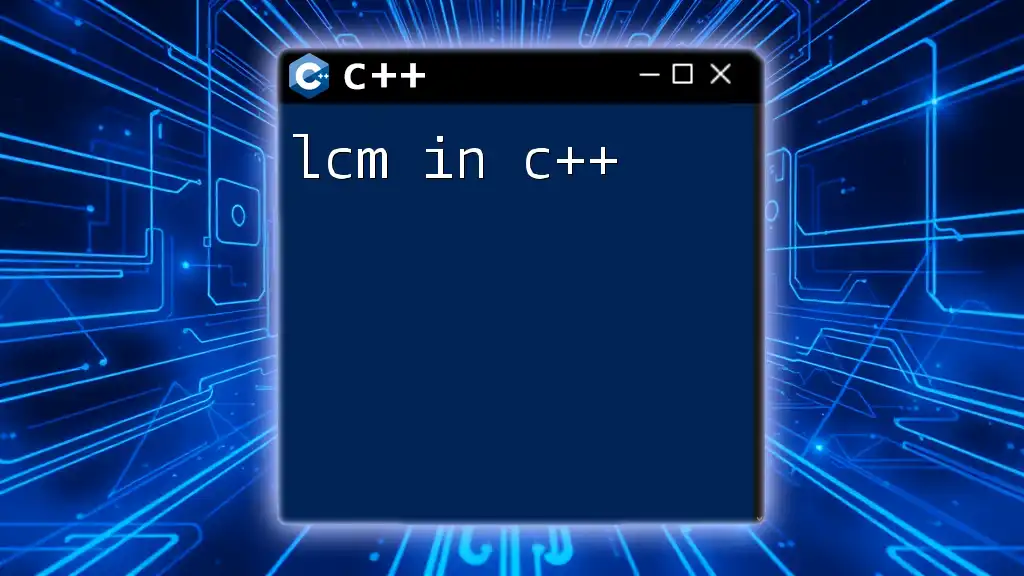In C++, the `std::printf` function is used to output formatted strings to the console, similar to the `printf` function in C.
#include <cstdio>
int main() {
int number = 10;
std::printf("The number is: %d\n", number);
return 0;
}
Understanding the "f" Command in C++
What is "f" in C++?
In C++, the "f" can signify several important concepts, most notably in the context of function names, floating-point representations, and formatting strings. Understanding the various applications of "f" is crucial for harnessing its potential in your C++ projects.
The "f" in Floating-point Numbers
Introduction to Floating-point
Floating-point numbers are a way of representing real numbers within computing, essential for performing calculations that require precision, such as mathematical simulations and graphics programming. In C++, floating-point numbers come in two main types: float and double. The float type represents single precision, while the double type represents double precision, allowing for a greater range and accuracy.
When you want to define a floating-point literal explicitly as a float, you append an "f" to the number. This ensures that the literal is treated as a float rather than a double, helping with memory efficiency and performance.
Example Code Snippet:
float myFloat = 3.14f; // The 'f' suffix specifies that the literal is a float
In this example, the variable `myFloat` is explicitly defined as a floating-point number, preventing unintentional conversion from a double, which can occur if the "f" is omitted.
Working with Functions in C++
Defining Functions
Functions are a cornerstone of C++ programming. They allow for code reusability and logical organization. The concept of "f" can extend to the use of "f" as part of a function name. Consider a function that calculates the square of a floating-point number.
The syntax to define this function is straightforward:
float f(float x) {
return x * x; // Returns the square of x
}
In this case, `f` serves as a concise and indicative name for our function.
Calling Functions
Calling functions in C++ is equally simple. After defining your function, you can invoke it in your program. For instance, let's see how to use the function defined above.
Example Code Snippet:
#include <iostream>
using namespace std;
float f(float x);
int main() {
cout << "Square of 5.0 is: " << f(5.0f) << endl; // Output: Square of 5.0 is: 25.0
return 0;
}
Here, the `f` function is called with the argument `5.0f`, and it returns the square of that number, demonstrating how to effectively implement and use functions within your C++ programs.
The Role of "f" in Formatting Strings
Introduction to Output Formatting
When working with output in C++, formatting plays a vital role in presenting the data clearly. The `printf` function, a classic C-style function, is routinely employed for output in C++. The "f" is particularly significant in this context, corresponding to formatting floating-point numbers.
Format Specifiers
One of the common format specifiers in printf is `%f`, which is used to display floating-point numbers. The precision can be controlled by additional specifications.
Example Code Snippet:
#include <cstdio>
int main() {
float num = 5.6789f;
printf("Formatted number: %.2f\n", num); // Output: Formatted number: 5.68
return 0;
}
In this snippet, `%.2f` specifies that the printed floating-point number should be formatted to show only two decimal places, which results in rounding and a cleaner output.
Common Pitfalls with "f" in C++
Misunderstanding the Usage of "f"
One of the most common pitfalls programmers encounter is misunderstanding the use of "f." When you forget to append the "f" suffix to a floating-point literal, it gets treated as a double, potentially causing type mismatches or inefficiencies in resource allocation.
Debugging Issues
When such issues arise, careful checking of your function calls and variable initializations will often resolve problems related to type mismatches. Ensure you're consistent with the types being used and be mindful of where the "f" should be applied.
Best Practices
Clear Naming Conventions
When naming functions and variables, clarity is imperative. The use of "f" in function names should clearly indicate the purpose of the function. For example, using `floatSquare(float x)` instead of just `f` can significantly enhance code readability, especially for those who may read your code later or if you return to it after some time.
Type Safety
C++ provides strong type-checking mechanisms. To maintain type safety, always be explicit about your types, especially regarding floating-point literals. Using "f" with float literals prevents unintended behavior and ensures your calculations remain accurate.
Conclusion
The "f" in C++ is not just a mere character; it represents a critical aspect of the language that influences how you define and handle floating-point numbers and functions. Understanding its various applications can significantly enhance your efficiency and clarity in C++ programming. As you continue to explore C++, remember to practice using these concepts and seek out further resources for deeper learning. By doing so, you’ll validate your skills and prepare yourself for more complex challenges ahead.

